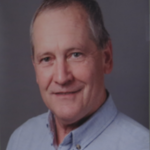Ray Finucane

Ray Finucane died Dec. 28. He was 80.
Finucane served in Vietnam as a highly decorated Marine fighter pilot. He then received his masters degree in mechanical engineering at University of California, Los Angeles. He began his professional career at Hughes Aircraft, he did original research in high power gas dynamic lasers. He also did work on meter scale metal mirrors for these applications. After Hughes, he went to Exxon and worked on offshore drilling in support of the Trans-Alaskan Pipeline
He came to Lawrence Livermore National Laboratory (LLNL) in the early 1980s to work in the Atomic Vapor Laser Isotope Separation Program. Some of his contributions were the basis for the transition from Nova-style steel space frame structures to concrete support structures used in the National Ignition Facility (NIF) to provide thermal and vibrational stability. He then took a several-year break from lasers and went to the physics department. He did original work on high-speed gas guns as well as special projects in Z-division (now part of Global Security). He returned to lasers and the NIF in 1999 and played a key role in the design of the Beampath Infrastructure System.. This work supported a renewed national effort in fusion energy.
In his final years, he tackled the challenge of understanding medicine dosage and timing for his Parkinson's Disease treatments. He instrumented his body and developed algorithms that showed it was often the temporal derivative of the dose, not the absolute level of the dose, that was important in control of the disease and attendant side effects. This work resulted in inventions, publications, and transfer of his work to the private sector.
A military funeral and burial ceremony will be held at the Sacramento Valley National Cemetery, 5810 Midway Road, Dixon, on Jan. 22, at 2:30 p.m. There is more information about the cemetery in the link.




